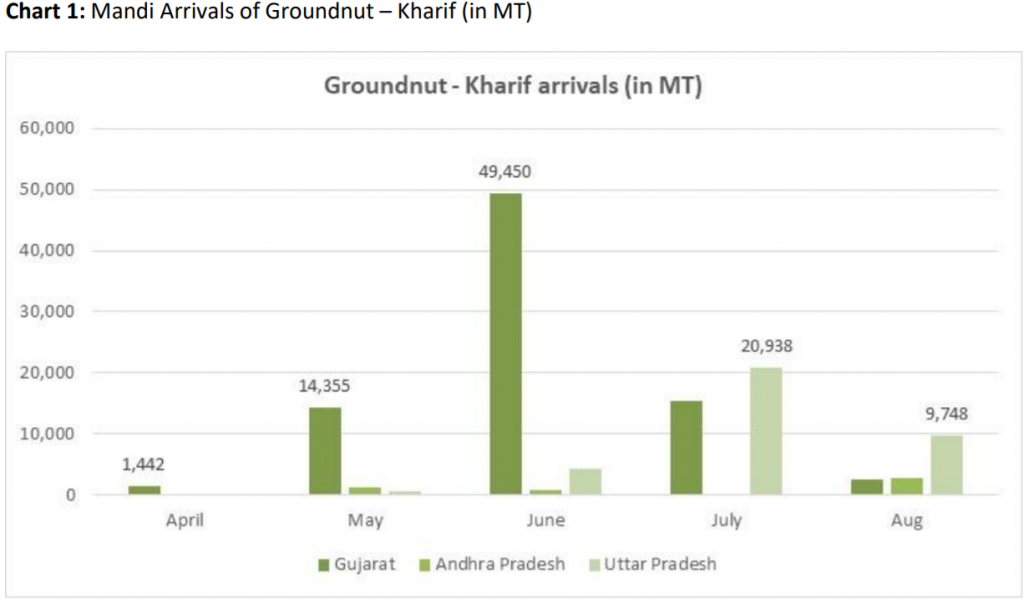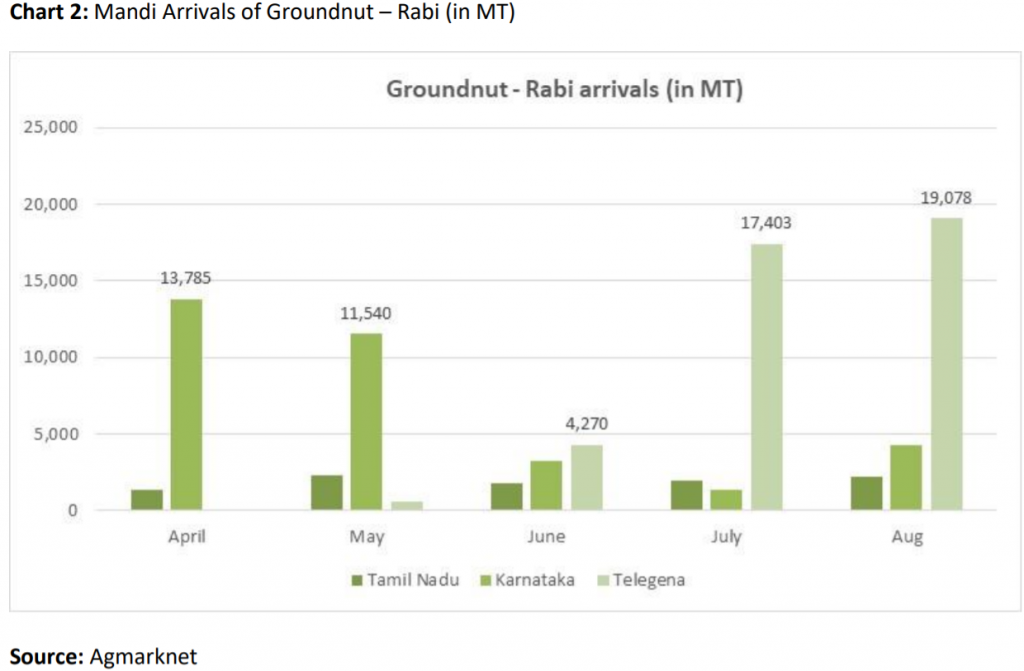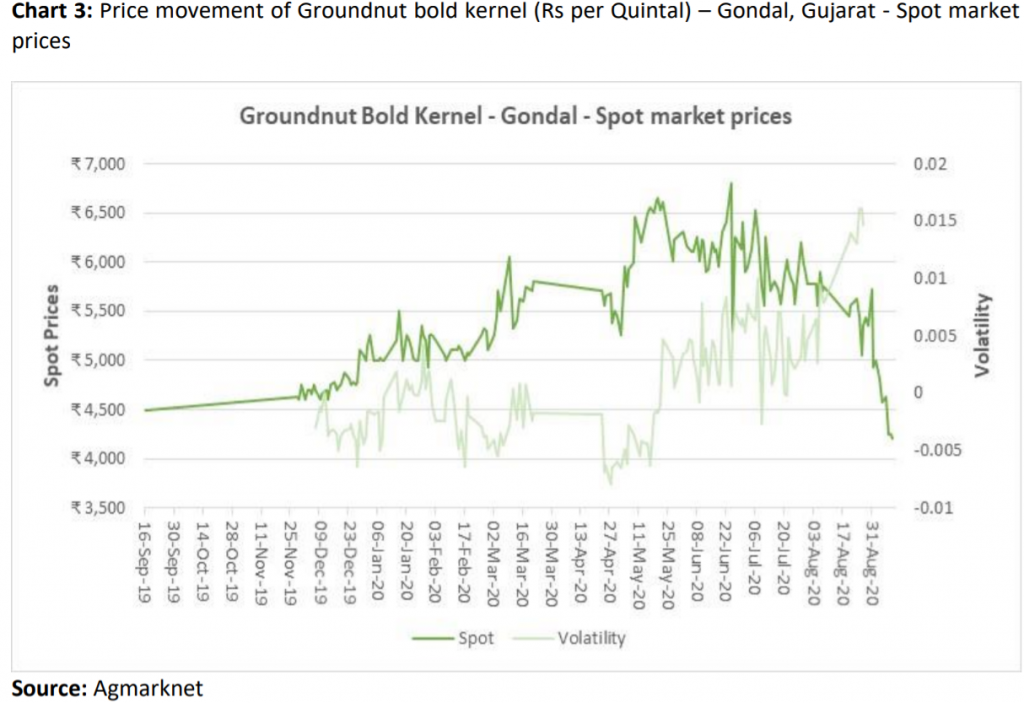Sowing period: May to June
Harvesting period: October
Crop season: Kharif
Sowing period: October to January
Harvesting period: April
Crop season: Rabi
Key growing regions:
- Gujarat – Rajkot, Banaskanth, Sabarkantha, Junagarh, Bhavnagar, Amreli
- Andhra Pradesh – Kurnool, Adoni, Kurnool, Chittor, Anantapur
- Maharashtra – Dhule, Vashim, Nagpur, Amarawati, Buldhana, Hingoli
- Tamil Nadu – Cuddalore, Villupuram, Erode, Salem
- Karnataka – Belgaum, Bidar, Dharwad, Haveri
Production trend and Stock position:
- According to Ministry of Agriculture, the sowing acreage of Groundnut as on September 11, 2020 was 50.89 lakh hectares (lh) up by 30.76 percent compared to 38.92 lh during the corresponding period.
- According to government of Gujarat, the sowing acreage of Groundnut as on September 7, 2020 was 20.65 lakh hectares (lh) up by 33.23 percent compared to 20.65 lh during the corresponding period.
- As per the Ministry of Agriculture fourth advance estimate released on August 19, 2020, Groundnut Kharif production was 83.67 lakh metric tonne (LMT) compared to FY 2018-19 which was 53.87 LMT, up by 55.32 percent and Groundnut Rabi production was 17.28 lakh metric tonne (LMT) compared to FY 2018-19 which was 13.40 LMT, up by 28.96 percent.
Monsoon update:
For the country as a whole, Seasonal cumulative rainfall during this year’s southwest monsoon season upto September 9, 2020 was above Long Period Average (LPA) by +7%. Details of the rainfall distribution over the four broad geographical regions of India are given below:
Table 1: Seasonal Rainfall Scenario for Monsoon Season of 2020 from June 1 to September 9, 2020




Market commentary: Price outlook
- Groundnut prices have continued a downward trend and are likely to be bearish in immediate / short term because of the surge in sown area and the expectation of a bigger harvest.
- The Government had increased the Minimum Support Price (MSP) of Groundnut by 3.28 percent to ₹ 5,257 per quintal for marketing year (MY) 2020-21 compared to ₹ 5,090 in 2019- 20.








 Connect With Us
Connect With Us